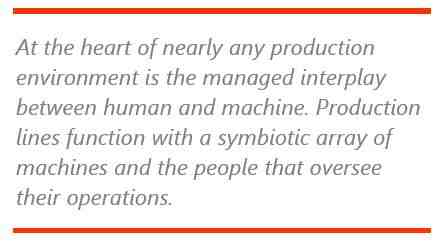

Keywords: Artificial Intelligence (AI), Fourth Industrial Revolution (4IR), Advanced Automation, Human/Machine Interaction, Soft Skills, Smart Manufacturing, ARC Advisory Group.
The manufacturing workforce has been dealing with and absorbing modern technology ever since the beginning of the Industrial Revolution. Without question technology will drive the workforce of the future. Today, industries find themselves amid the Fourth Industrial Revolution (4IR), which is poised to transform work at an unprecedented pace through expanding technologies such as artificial intelligence, collaborative robotics and cognitive automation, advanced analytics, material science, additive manufacturing, and cyber-physical systems. Additionally, the effects of this constantly advancing technology are likely to create more jobs than it eliminates—as it has done historically.
The 4IR is also comprised of a significant list of technological advances. However, what sets it apart is the merging of boundaries between the biological (human), the physical world, and the digital/virtual environments. Machines “speak” to each other through the internet of things, processes respond to intelligence devised by machine learning algorithms, and humans engage in real-time “conversations” with mechanical processes through bidirectional interfaces. The human workforce will become, by necessity, a functional component within the overall set of technologies that will be the smart factory of the future.
Additionally, the 4IR is creating a disparity between available workers and the skills necessary for technology driven jobs. Part of the challenge manufacturers are facing is understanding how today’s jobs and associated skills are morphing into new jobs and career pathways that continue to evolve along with advanced technology. How can the manufacturing industry prepare for this future workplace and ready its workforce to work beside robots and advanced technologies? What are the skills that will become mandatory in the future workplace? What are the pathways for training and education to enable these skills? We begin by exploring what’s possible for future jobs in manufacturing.
Just as automation of the factory and production lines changed the tasks and skillsets of workers, the technology that powers the smart factory of the future will form the new tasks and skillsets of human workers in this smart environment.
One significant aspect affecting the overall workforce is the ability of many workers to work from home. Initially, the COVID pandemic precipitated the need for large segments of the workforce to isolate themselves from the workplace if their work tasks could be completed remotely. Those workers in service industries, medical care, utilities, public safety, and especially manufacturing needed to be on duty or on premise of the manufacturing facility in an operational capacity. While automation of manufacturing has  progressed to very advanced states, the human manufacturing worker remains needed and required.
progressed to very advanced states, the human manufacturing worker remains needed and required.
At the heart of nearly any production environment is the managed inter-play between human and machine. Production lines function with an interdependent array of machines and the people that oversee their operations. Despite an influx of more than 2.7 million industrial robots in use worldwide—including fixed robotic arms, moving cobots, and autonomous-guided vehicles moving materials and finished goods—humans are still needed to help produce the vast majority of goods the industry makes worldwide.
Along with the move toward advanced automation, robotics, and artificial intelligence, manufacturing workers are increasingly relying on digital tools to effectively complete their work. Tools such as collaboration platforms, work-based social media, and instant messaging can increasingly support the communication necessary for higher productivity. As digital transformation and the 4IR continue to redefine manufacturing jobs of the future, leaders and workers alike need to embrace a work environment that is expected to blend advanced technology and digital skills with uniquely human skills, to yield the highest level of productivity. Understanding how work will change can help industry prepare for a transformative manufacturing ecosystem that will fundamentally alter the workforce and the production process.
Expanding and coordinating both digital and human skills together will augment and optimize the factory floor production systems keeping the human worker in the loop as factories become smarter and more autonomous. The rise of automation in the workplace has brought with it an interesting corollary for skills needed in human workers. As technology replaces many of the manual or repetitive tasks many jobs entail, it frees up space for skills that are uniquely people skills such as creativity and innovation and gives the workers that run and manage the factory an opportunity to “rethink” the process. Companies need workers that can exhibit these skills as well as the digital skills necessary to work alongside automation.
ARC Advisory Group clients can view the complete report at ARC Client Portal
If you would like to buy this report or obtain information about how to become a client, please Contact Us
Learn more about ARC In-depth Research at Market Analysis
Learn more about ARC Strategic Services at Advisory Services for Industry Leaders
Learn more about upcoming ARC Industry Leadership Forum

